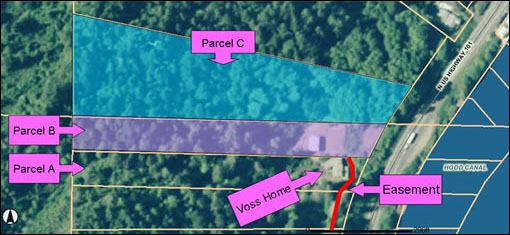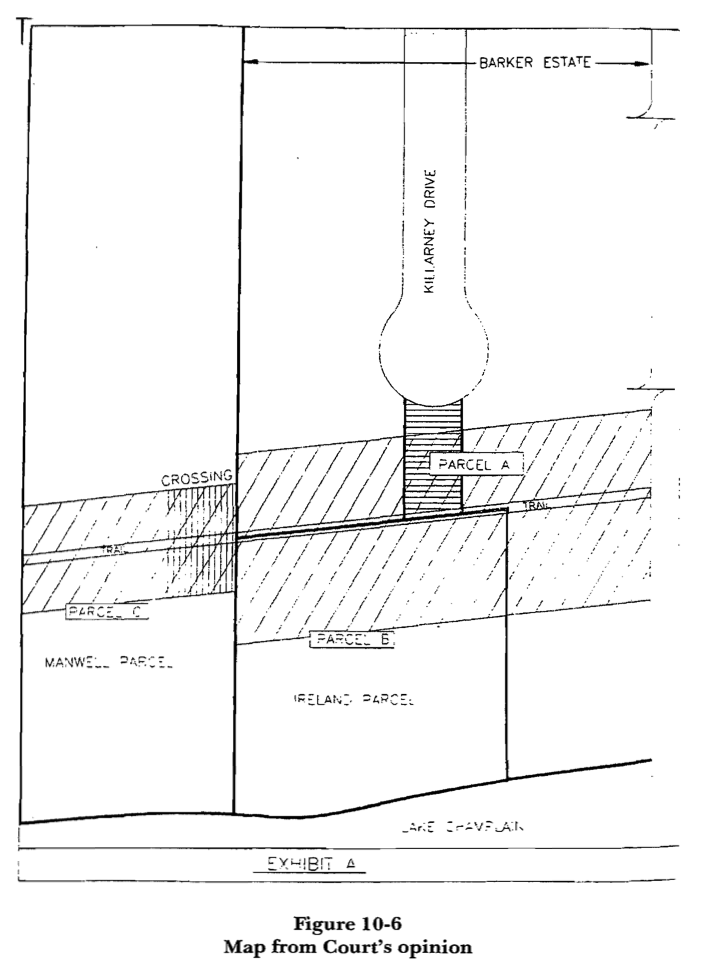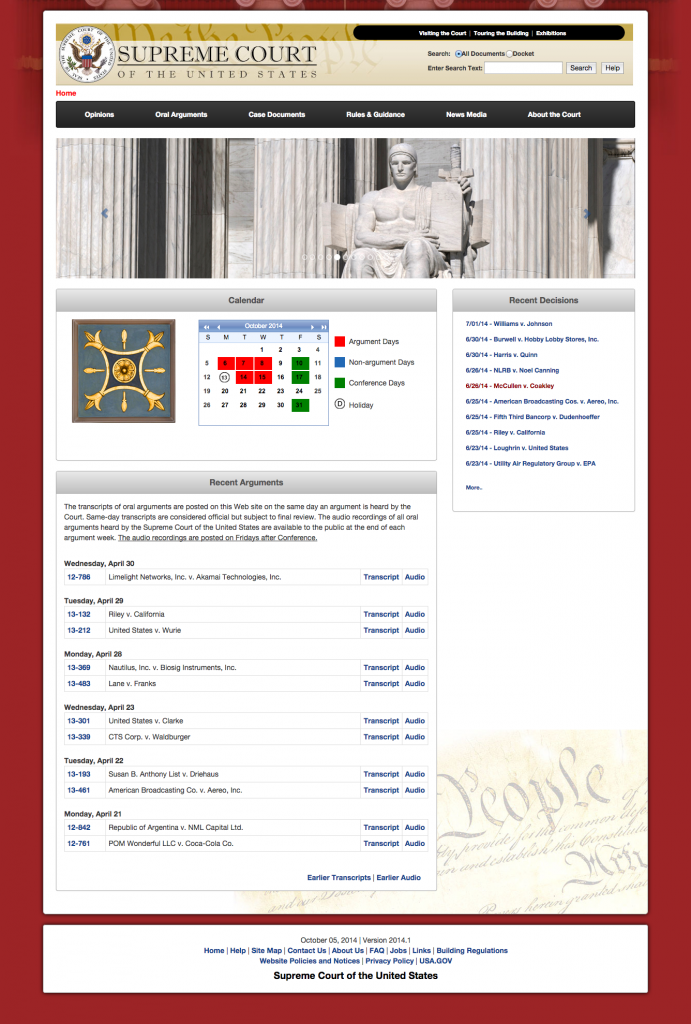Fourth, Perriguey expressed his concern to Oregon DOJ about what would happen in the absence of “some kind of adversarial process.”
11. Attached hereto as Exhibit F (Bates #1061-1062) is a true and correct copy of an email exchange dated September 17, 2013 between Lake Perriguey and Sheila Potter in which Perriguey expresses his “hope to have a draft complaint to [Potter] in a couple of days,” recognizes problems with a judicial determination of unconstitutionality absent “some kind of adversarial process” but nevertheless asks Potter and her office to consider “a stipulated judgment,” and then expresses concern that if the federal judge decides to stay the effective date of any such stipulated judgment until a Supreme Court ruling on the issue, “then we [i.e., Perriguey and Potter] may not have accomplished anything by suing in Oregon.” After Potter reminded Perriguey that they had discussed on the phone that the State would not be able to sign a stipulated judgment on constitutionality, Perriguey acknowledged that the two of them had “concluded that this approach did not make sense to either” of them.
Fifth, the Oregon Deputy AG and Executive Director of Oregon ACLU emailed to discuss litigation tactics, and whether any other parties would intervene, if the state does not defend the law. Ultimately, the National Organization for Marriage intervened.
12. Attached hereto as Exhibit G (Bates #1087-1091) is a true and correct copy of an email exchange dated September 23, 2013, between David Fidanque, Executive Director of ACLU-Oregon (counsel for Plaintiffs in the Rummell case), and Deputy Attorney General Mary Williams (counsel for defendants in both Geiger and Rummell cases) referencing discussions between the two about the possibility of intervention in the prospective lawsuit if the “state elects not to defend Measure 36.” The exchange and attached memo indicates joint concern about litigation tactics and discloses the sharing of legal research nearly a month before the Geiger complaint was filed and three months before the Rummell complaint was filed.
Sixth, the challengers contacted the state, and sought the AG’s position on venue.
13. Attached hereto as Exhibit H (Bates #1123) is a true and correct copy of an email exchange dated October 1, 2013, between Lake Perriguey and Sheila Potter transmitting a draft complaint and seeking the State’s position on venue.
Seventh, the challengers “hope” that the state will “encourage the court” to apply strict scrutiny. Recall at the time under prevailing 9th Circuit precedent, only rational basis would apply:
16. Attached hereto as Exhibit K (Bates #1187-1188) is a true and correct copy of an email exchange between Lake Perriguey and Sheila Potter dated November 5, 2013, in which Perriguey expresses his “hope that the state will encourage the court to apply a strict scrutiny analysis” and asks whether Potter anticipates “that the state will acknowledge the history of discrimination against gay people and advance a strict scrutiny/compelling basis analysis.”
Eighth, a lawyer from the AG’s office worries about outsiders “lobby[ing] the AG to say what they want her to say.”
17. Attached hereto as Exhibit L (Bates #1193-1194) is a true and correct copy of an email dated November 5, 2013 from Sheila Potter to Lea Ann Easton (co-counsel for Geiger Plaintiffs) forwarding Lake Perriguey’s request that the State encourage the court to apply strict scrutiny, asking to speak by phone and stating: “I don’t want to worry Lake, but I also want to be careful about discretion in a case in which a lot of people want to know what we’re going to say before we say it, and are battering down the AG’s door to find out so that they can lobby her to say what they want her to say.”
Ninth, the challengers accepted a suggestion from the AG’s office to broaden the scope of their relief (and they ultimately did so).
19. Attached hereto as Exhibit N (Bates #1228-1231) is a true and correct copy of an email exchange dated November 19-21, 2013 between Sheila Potter and Lake Perriguey/Lea Ann Easton in which Potter points out ambiguities in the complaint about which statutes will be enjoined and offers to attach a list to the State’s answer “as a stipulation,” because “[t]hat seems the quickest way to all get on the same page.” Potter also advises Plaintiffs’ counsel that “the relief requested doesn’t ask for an order compelling equal application of the benefits of laws that specifically refer to ‘husband’ and ‘wife’,” noting that “If that’s something that belongs in the suit (and it may), I imagine that it should be in the pleadings, so that it’s within the Court’s authority to grant or deny that relief, rather than the Court ordering it sua sponte.” In their First Amendment Complaint, Plaintiffs accepted this suggestion by counsel for the Defendants to broaden the requested relief sought. …
21. Attached hereto as Exhibit P (Bates #1342-1343) is a true and correct copy of an email from Lea Ann Easton to Kate von Ter Stegge dated December 4, 2013, transmitting Plaintiffs’ First Amendment Complaint and acknowledging that the amendments adding specific statutes and clarifying the relief requested were made “[i]n response to the email dialogue with Sheila that started on November 21st.”
Tenth, a lawyer from the AG’s office acknowledges that she was conferring with the challengers:
22. Attached hereto as Exhibit Q (Bates #1499; also see Exhibit T – Bates #1578) is a true and correct copy of an email exchange between Lea Ann Easton and Sheila Potter dated December 20, 2013, in which Potter acknowledges the involvement of both the Attorney General and Governor in decisions being made about the litigation, and in which Easton asks to “confer” with Potter about the Rummell Plaintiffs’ motion to consolidate “and a response.”
Eleventh, before the complaint was even filed, the challengers and AG began using the pronoun “We” to suggest they were on the same side.
25. Attached hereto as Exhibit T (Bates #1576-1579) is a true and correct copy of an email exchange dated December 24, 2013 between Lea Ann Easton and Sheila Potter sharing legal analysis about one of the Rummell Plaintiffs’ standing, in which Easton “vent[s]” that “if we can make a cogent argument [that the Basic Rights Organization lacks organizational standing], we can use it in the response to consolidate as a reason why the court shouldn’t consolidate the cases,” (emphasis added), indicating by use of the plural “we” a planned collaboration between the Geiger plaintiffs and defendants in response to the Rummell plaintiffs’ motion to consolidate.
Twelfth, the lawyer for the AG said “thank you so much for working with me on” the prayer for relief.
29. Attached hereto as Exhibit X (Bates #1818-1819) is a true and correct copy of an email exchange dated January 17, 2014, between Misha Isaak and Sheila Potter, in which Isaak admits that the Rummell Plaintiffs modified the prayer for relief in their complaint in response to suggestions made by Defendants, and to which Potter responded: “Thanks! Yes. I can live with this. Thank you so much for working with me on this.”
Thirteenth, Potter seems to show some degree on awareness, asking to meet with a “small group” so she can be “more candid.” She added a smiley emoticon “:)”
34. Attached hereto as Exhibit CC (Bates #1975-1976) is a true and correct copy of an email dated February 10, 2014 from Sheila Potter to Tom Johnson (counsel for the Rummell Plaintiffs) stating that “the smaller the group [on a planned phone conference], the more candid I will be comfortable being! :)”, and informing Johnson that she’d like to check in with him “in advance of filing the [State’s] answer, so that the parties know what we’re filing before it hits PACER.” Johnson confirmed the meeting the following day and noted that he was “working to keep the group as small as possible for the reasons we discussed.”
Fourteenth, Potter teases the truth by stipulating to a certification that they are “unable to resolve the dispute.” Potter says it has the “virtue of being completely, literally true” (how I have no idea). None of the previous communications were alluded to.
35. Attached hereto as Exhibit DD (Bates#1991) is an email from Sheila Potter to Tom Johnson dated February 13, 2014, proposing to provide a Local Rule 7-1 meet and confer certification for Plaintiffs’ motion for summary judgment stating that counsel for the respective parties had “concluded that they were unable to resolve the dispute in this case among themselves,” a position which she claimed had “the virtue of being completely, literally true,” despite the fact that the proposed certification failed to disclose that the nominally opposing parties were actually collaborating to have Oregon’s marriage laws declared unconstitutional and that Local Rule 7-1 embraces the understanding of all counsel that the court must, ultimately accept or ratify any agreed upon resolution, even if stipulated to or unopposed. See LR 7-1(4). The Rummell Plaintiffs accepted Potter’s proposed language. See Rummell Motion for Summary Judgment, D.Ct. Dkt.#42 (Feb. 18, 2014).
Fifteenth, the plaintiffs and AG attorney discussed in advance whether a mandamus petition could force the AG to appeal.
36. Attached hereto as Exhibit EE (Bates #2005-2006) is a true and correct copy of an email exchange dated February 14-17, 2014 between Sheila Potter and Lea Ann Easton, referencing concerns that had been raised by Misha Isaak about a possible mandamus action forcing the Attorney General to appeal a judgment in plaintiffs’ favor, in which Potter notes she’s “not worried about mandamus” but is “glad that people are thinking about all the ways that things could go pear-shaped,” thereby indicating collaboration between plaintiffs’ and defendants’ attorneys not to have the anticipated final judgment of unconstitutionality thwarted by outside factors. During the exchange, Easton asked Potter: “Don’t the Plaintiffs get to vet and edit the AG’s remarks?”
Sixteenth, the AG lawyer said she is on the “same page” as the challengers.
38. Attached hereto as Exhibit GG (Bates #2064) is a true and correct copy of an email exchange between Tom Johnson (counsel for the Rummell plaintiffs) and Sheila Potter dated March 11, 2014, in which Johnson notes that “We are totally on the same page,” and Potter responds, “You know, I rather suspected we might be.”
Seventeenth, the parties agree not to move up oral arguments so as to not upset the judge.
39. Attached hereto as Exhibit HH (Bates #2057-2060) is a true and correct copy of an email exchange between Lake Perriguey and Sheila Potter dated March 11, 2014, in which Perriguey proposes to request that oral argument be moved up, and to which Sheila responds that it is a bad idea because Judge McShane “really reacted unhappily to the perceived push for a quick decision” and notes that “we haven’t filed our response yet.” Perriguey then agreed with Potter’s assessment, noting that we don’t want it to “appear that we are pushing the judge . . . despite the fact that everyone in the room appears to agree.”
Eighteenth, when the state filed a response to summary judgment, the challengers wrote “I want to play on your team instead of my team.”
41. Attached hereto as Exhibit JJ (Bates #2132) is a true and correct copy of an email dated March 19, 2014, from Lea Ann Easton to Sheila Potter stating: “Wonderful response [to motion for summary judgment, in which the State join in Plaintiffs’ attack on the constitutionality of the Oregon marriage law it was “defending”]. I want to play on your team instead of my team.”
Nineteenth, the parties discussed in advance whether the judge would grant a stay–even the government did not ask for one.”
46. Attached hereto as Exhibit OO (Bates #2452-2454) is a true and correct copy of an email dated April 15-16, 2014 from Lake Perriguey to counsel for all parties, plaintiffs as well as defendants, circulating a table of legal issues raised in the briefing “which might be helpful for us to begin a conversation about what topics we each might focus on in the [oral argument] presentation.” Forwarding the email to Mary Williams, who had been omitted from the original distribution list, Perriguey notes that a “group of lawyers [from both sides are] planning to meet in advance of the oral . . . conversation . . . next week.” Among the topics Perriguey proposed to discuss were: 1) “Ballot Measure Animus,” a concession of which by the State would trigger analysis and likely determination of unconstitutionality under Romer v. Evans); 2) the “State’s interest in protecting [gay] families,” thereby indicating that the State was only advancing interests that supported Plaintiffs’ attack on Oregon’s marriage laws, not interests that supported the laws themselves; 3) that the “State [was] harmed by ban” on same-sex marriage; and 4) concerns that had surfaced “in talks among counsel” that “Judge McShane might consider issuing a stay, even though no one has asked him to do so.”
After reading about the National Organization for Marriage’s intervention, the AG lawyer told the challengers that she wants to “beat them” and “they don’t get to win this.”
48. Attached hereto as Exhibit QQ (Bates #2619) is a true and correct copy of an email from Sheila Potter to Tom Johnson and Misha Isaak dated April 21, 2014, noting in response to a press release issued by the National Organization for Marriage announcing that it would seek to intervene in defense of the Oregon marriage laws that the government defendants were supposed to be defending, that the release “made me want to beat them. They don’t get to win this.” The exchange is evidence that one of the principal attorneys for Defendants viewed herself as though she were an attorney for Plaintiffs in the case.
The challengers and government agree to party after the challengers win:
53. Attached hereto as Exhibit VV (Bates #3024-3028) is a true and correct copy of an email exchange dated May 19, 2014, between Anna Joyce (AG’s office), Lea Ann Easton, and Sheila Potter, in which Joyce noted that the State defendants would, like Plaintiffs, be filing an opposition to NOM’s stay application, and in which Potter and Easton offer to buy each other a “glass of wine” to celebrate the ruling against Potter’s clients and make a “deal” for Potter and other attorneys in the office of the Attorney General to “hang out” at Easton’s house to celebrate the ruling.
—
Whether or not the Oregon AG ultimately decided that the law was unconstitutional, and that it should not be defended, the deep level of communication with the challengers over specific litigation strategies is extremely disturbing. I encourage you to read through the entire declaration and not come away with this creepy sense of preordination. I can’t imagine any other group having such intimate influence over the Attorney General in any other context–before the complaint is filed.
In general, when a state declines to defend a law, I think there is no Article III case or controversy. The Prop 8 case should have been dismissed for lack of jurisdiction. The courts do not agree with me here. But in a case where there are clear discussions between the challengers and government of how *not to defend* the law, I think standing becomes harder to justify. Had these documents been known earlier, would the district court have ruled differently?
In United States v. Johnson (1943), the Court held that a landlord and a tenant colluded to challenge certain federal rent control laws, and there was no Article III standing–especially in the context of declaring a law unconstitutional!
The Government does not contend that, as a result of this cooperation of the two original parties to the litigation, any false or fictitious state of facts was submitted to the court. But it does insist that the affidavits disclose the absence of a genuine adversary issue between the parties, without which a court may not safely proceed to judgment, especially when it assumes the grave responsibility of passing upon the constitutional validity of legislative action. Even in a litigation where only private rights are involved, the judgment will not be allowed to stand where one of the parties has dominated the conduct of the suit by payment of the fees of both.
While the facts in Johnson showed that the landlords paid for the lawyers for the tenants, and managed the entire suit–serious collusion–the case still stands for the proposition that collusion divests a case of Article III standing. While such behavior is perhaps not to be unexpected from slumlords challenging New Deal legislation, such a level of agreement between the challengers of law’s constitutionality, and the government, is disquieting to say the least. I will add this to my ongoing article about the same-sex marriage cases and the rule of law.
I wonder if similar FOIA requests between the United States DOJ and same-sex marriage challengers in the DOMA and Prop 8 case would reveal similar findings. The Times reported that Ted Olson and David Bose met with Valerie Jarrett and White House Counsel Kathryn Ruemmler to impress on them that they the SG should file a brief in the Prop 8 case. This lobbying though proved unsuccessful:
Both women seemed impressed by their pleas. But before they left, Boies said, Jarrett made it clear that further lobbying via the press would not be helpful. This was now a legal decision, she said, not a political one.
That didn’t strike me as particularly impressive at the time, but it does now.








